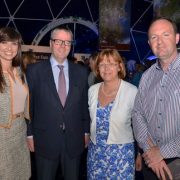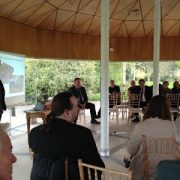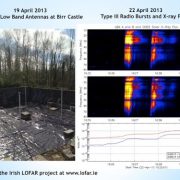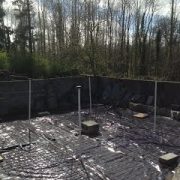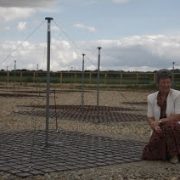LOFAR to bring cutting-edge network of radio telescopes to Ireland
Dublin, June 6, 2013: Irish astronomers launch campaign to build a “cutting edge” LOFAR radio telescope in Birr Castle Demesne and to connect Ireland to a leading European network of radio telescopes.
To coincide with the European Space Expo’s visit to Trinity College Dublin in June, the Irish LOFAR radio telescope consortium hosted a reception to formally launch a drive to raise funds to build a LOFAR radio telescope in Birr Castle Demesne.
The proceedings – hosted by Irish TV presenter Aoibhinn Ni Shuilleabhain, who was an ´ambassador´ for the Dublin City of Science 2012 – is part of a week-long visit to TCD by the spectacular European Space Expo during the Irish Presidency of the EU.
Prof Peter Gallagher, who leads the Irish LOFAR radio telescope team, explained the importance of the EU-wide initiative for Ireland.
He said, “I-LOFAR will benefit Ireland in various ways.” “An Irish LOFAR station will connect Ireland to a cutting-edge network of radio telescopes that has the potential to revolutionise our understanding of the universe.”
At an estimated cost of 1.5m euros the aim is to build an Irish LOFAR station, connecting it to the 150m euros international LOFAR telescope network which is already deployed across Europe.
The I-LOFAR would be located in Birr Castle, near the 3rd Earl of Rosse’s Leviathan telescope, which was the largest optical telescope in the world from the mid-1800s to 1920s.
Prof Gallagher adds, “I-LOFAR will fascinate students and inspire them to study science, engineering and mathematics at college. Producing graduates with these skills is key to Ireland’s economic recovery and the developing a smart sustainable economy. Large-scale science projects such as LOFAR are key to capturing students’ imaginations.”
He points out that LOFAR is also a “stepping stone” to the mega science project “Square Kilometre Array” (SKA) as well as the African-European Radio Astronomy Platform (AERAP).
An Irish LOFAR station will, he says, enable Irish universities and companies to become “engaged” in SKA and also the developing capacity for radio astronomy in South Africa.
Dr Gallagher said an Irish station would produce “vast quantities” of data and, when operational, would be the biggest source of “big data” in the country.
He said it is expected to bring significant economic benefits, adding, “I-LOFAR will draw attention to the area as a location for technology companies and attract additional tourists into the region.”

